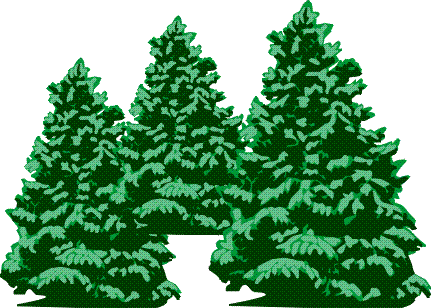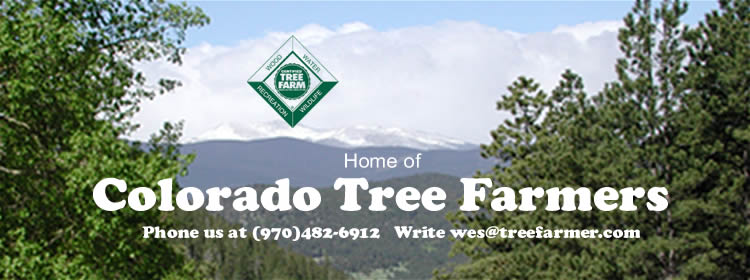Education>
HOW WE LEARNED TO GROW TREES AND MORE THAN TREES
 (A Short Tree
Farm History) BY. Lester A. DeCoster The idea of tree farming is a serious departure from the old idea of how people related
to forests. In the old idea, people were occasional visitors to the forests. They camped
and hunted there, gathered food for pleasure and cut wood for their use. Once the desired
result was gained, people left the forest to nature: to flourish or flounder.
(A Short Tree
Farm History) BY. Lester A. DeCoster The idea of tree farming is a serious departure from the old idea of how people related
to forests. In the old idea, people were occasional visitors to the forests. They camped
and hunted there, gathered food for pleasure and cut wood for their use. Once the desired
result was gained, people left the forest to nature: to flourish or flounder.
This is a pre-agriculture view of forestry a view where we take what nature gives, when
and if it gives. In his book,"Beginnings", Issaac Asimov estimates that this
hunter-gatherer approach could support about 20 million people as a world total, rather
than the 5 billion (plus) that we presently have.
Tree farming is only about 50 years old as a widely applied idea but take the tree out
of tree farming and you have farming-the 10,000 year-old foundation of civilized humanity.
The Sumerians were probably growing wheat and other food crops in the Tigris-Euphrates
valley 10,000 years ago. Historians agree that it was the idea of farming that led to the
growth of human civilization. Only after people learned to exert control over their food
supply was there time and energy left to develop written language, science, art, music,
cities, government and law.
It must have been a scary idea when people decided for the first time to stay in one
place and grow their food instead of moving constantly, seeking whatever edibles they
could find. The idea that we can and should cultivate natural aspects that are most
favorable to us has been accepted for growing food and ornamentals and most human
endeavors. But until very recently we were still trying to be hunter-gatherers with
forests, hoping that nature would grow the trees we needed somewhere and thinking that we
had only to seek far enough to find what we needed. People have been slow to accept the
idea that we can and should be tree farmers.
1940-1941 was a turning point. Americans had been cutting forests and not renewing them
since settlement. Wildfires burned 30-50 million acres of forests most years.
In 1940, commercial forest land in America was at a new low of about 460 million acres.
Net annual growth. of trees was about 11 billion cubic feet. 168 million acres of forests
were unavailable or unsuitable for renewable forest management (most of this was not
deliberately set aside).
Foresters had been preaching fire control and forest management since 1900 but forestry
remained something considered only by big industry or big government.
Most forest-owning individuals of 1940, allowed trees to grow.on their land only when
they couldn't find another use for it. The woods they owned were shade for the cows on
land too rough to farm. The trees were cut when they needed money or wood and it was up to
nature to take care of what grew back.
The large forest products companies were concerned and frustrated; so was the federal
government. Forest land was not a safe investment, fires were likely to sweep through your
woods before your crop matured. The forests were being burned, cleared, degraded, wasted
and not renewed. Future wood supply looked to be at risk. Even where the large owners
tried to manage large acreages, fires were a constant risk and fire control systems were
nil.
The Weyerhaeuser Company was tired of having its woods burned and concerned for the
future of forests. On June 12, 1941, the company invited people to come see forestry in
action on one of their properties: a 120,000 acre forest near Montesano, Washington.
People came, looked around, kicked the ground and talked, some trees were planted,
speeches were made, lunches were eaten and people went home. But some new words being used
stuck in the mind: "Tree Farm". Weyerhaeuser proposed to keep land for growing
trees and use "Tree Farm" management to maintain those forests renewably.
Furthermore, the company urged others to become tree farmers too.
The techniques were not new but the words were and they were simple words that said
exactly what was intended.
The Tree Farm idea took root like a seed falling on the right ground at the right time.
The U.S. entered the second world war in late 1941.The war effort demanded unprecedented
raw material utilization and production of all materials including wood. The peacetime
America that followed the war was an industrialized economy that looked at resources
differently and didn't demand the forest-clearing emphasis of the pre-war agrarian
economy.
After the war, land clearing stabilized, forest fire control systems were put in place
and state after state adopted the Tree Farm idea or at least a forest management approach.
Today we have 483 million acres of commercial forests capable of growing trees
renewably (23 million acres more than in 1940). Net annual growth of trees is more than 22
billion cubic feet (about twice the rate in 1940). We hold fire losses to about 3 million
acres most years. We also have 247 million acres of non commercial forest, much of it
deliberately noncommercial because it has been set aside from harvest by law in parks,
wilderness areas and other special designations. That's 79 million acres more than in
1940.
And from that first Tree Farm, dedicated in 1941 on a land area about the size of
Philadelphia, we have grown to 70,000 properties stretching from Maine to Alaska over 95
million acres, a land surface larger than the nation of Japan.
Nineiy five billion trees of all sizes, ages and species grow on these Tree Farms.
To our wood supply concerns we have added, wildlife, soil and water protection,
wetlands, biodiversity, global warming, aesthetics, recreation and a host of other forest
related matters. Many of these keep getting stuck in 'leave-the-forest-alone"
solutions. But most of them can and are being accommodated through Tree Farm management.
With the return of forests we have brought many species of forest dwelling wildlife
back from low levels to profusion. Deer, turkey, grouse, woodcock, black bear, and wolves
have returned. Soil has been stabilized in the windy plains and on previously eroding
hills. Progress has been made.
American forests and American lands are in better shape today than they were in 1941
because of the growth of an idea. The idea set out to change the way people viewed their
relationship with forests. The idea and the relationships are still changing and growing.
We wonder, what will someone looking back 50 years from now or even 10,000 years from now
think of it?
For an in depth history visit The Forest History Society
WHAT DO YOU THINK?  Talk to Us
Talk to Us 
 Back
to Education
Back
to Education
